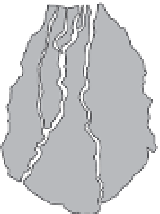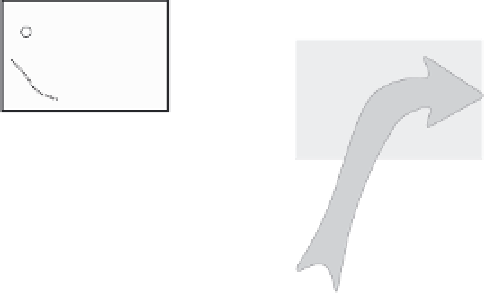Geology Reference
In-Depth Information
Ages and Offsets on the Southern San Andreas Fault
35.5±2.5 ka
Ofset
fan surface
500 m
C
T2u
37
.4±4.4
35.
4±1.4
T2i
3
5.4±1.4
T2l
30
40
CRN age (ka)
Piercing
point
D
J
55
A
Projected
fan edge
Boulder
top min.
deposit-
ional ag
e
50
Restored fan
surface
45
B
Height
v age
35
U-series
minimum
depositional
age
30
0.25
0.50
0.75
Boulder Height (m)
500 m
Fig. 6.22
Long-term slip of offset alluvial fans.
Dating and slip rates for a faulted alluvial fan along the southern San Andreas Fault, California. Although this offset
fan was recognized in the early 1980s (Keller
et al.
, 1982), no slip rate was determined for it because the fan
surface was undated. Two recent studies based on cosmogenic exposure ages reached different conclusions on
both ages and the magnitude of slip. A. Offset fan surface displaced by two fault strands. B. One restoration
of the fan to a pre-deformed state suggests 565 m of total offset (van der Woerd
et al.
, 2006). C. Cosmogenic
exposure age dating of 19 cobble-sized clasts on the fan surface yielded an age of 35.5
±
2.5 ka and an estimated
Late Pleistocene slip rate of
∼
16 mm/yr. D. Another cosmogenic study (Behr
et al.
, 2010) suggests exposure ages
that scale with boulder size for clasts less than
∼
50 cm high, a mean age of
∼
50 ka for the fan surface, a cumulative
fan offset that ranges from 680 to 980 m, and a preferred slip rate of 14-17 mm/yr. Modified after van der Woerd
et al.
(2006) and Behr
et al.
(2010).
















































































































































































































































































































